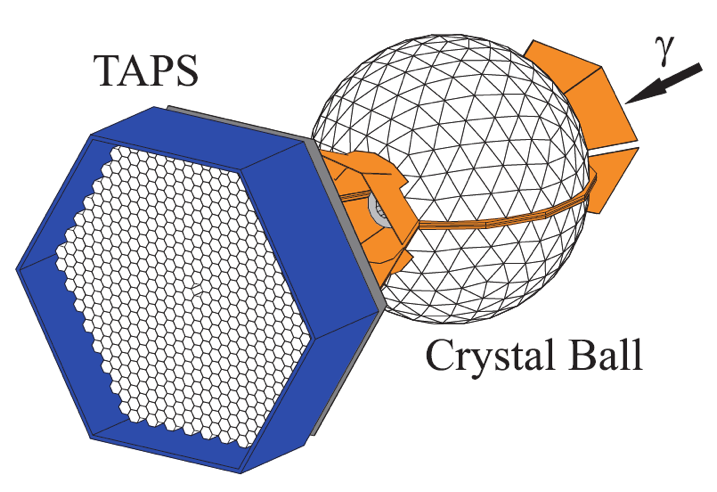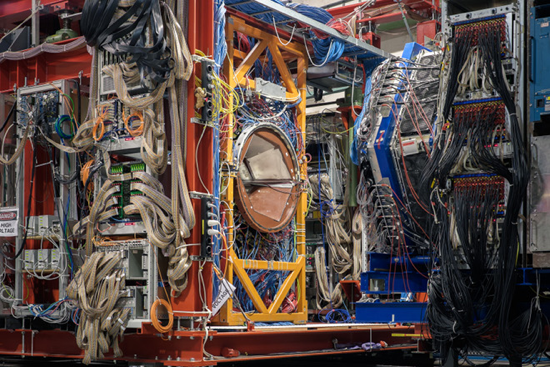Experimental Nuclear and Subnuclear Physics: MAMBO
Why does the proton spin? What are the charge and magnetic field distributions generated by the strong interaction between the quarks inside the proton? What are the stellar processes leading to the formation of neutron stars? These are just some of the major experimental research topics that are studied by the MAMBO experiment. This study is carried out using reactions induced by high energy photons (from 50 MeV to 3.0 GeV) on nucleons and nuclei at the facilities MAMI (Mainz) and ELSA (Bonn), both located in Germany. This activity is carried out by a large international collaboration involving about 150 researchers from over twenty different European and North American institutions.
The use of photons is very advantageous for this activity because electromagnetic interaction, well known by quantum electrodynamics (QED), becomes negligible when compared to the intensity of the interactions among the excited hadrons present in the final state. Photon-induced interactions can therefore be suitably treated by assuming the validity of Born's approximation, and the resulting decoupling of input and output channels allows to get model-independent information about both the nuclear and the nucleon structure. In addition, unlike the hadronic probes (such as the proton) that interact solely with the surface of a nucleus, only with the photon can explore its entire volume.
In general, the main items of the MAMBO research program are: i) Measurement of fundamental properties both of the nucleon (electrical and magnetic polarizabilities, charge distribution, ...) and of its baryonic resonances (mass, magnetic moment, helicity amplitudes, ...); ii) Test of violation of fundamental symmetry principles (C, CP, ..) by studying the rare decays of eta and eta-prime mesons; iii) Modification of nuclear properties within nuclear matter and structure of atomic nuclei All these searches are carried out through state-of-the-art technology that includes the use of: i) A particle detector with high angular and momentum acceptance able to identify different types of charged and neutral particles coming from a wide range of possible reactions (a schematic view of the apparatus used in Mainz is given in the figure); ii) "tagged" photon beams (ie, whose energy is determined by the difference between the energy of the primary electron beam and the energy of each electron that produced the photon via the bremsstrahlung process) and which must be polarizable both linearly circularly; iii) cryogenic (and active) targets of nucleon that can be polarized both longitudinally and transversely to the direction of the photon beam; iv) very thin solid of light and heavy nuclear targets. The Pavia Group, both in Mainz and in Bonn, is responsible of the construction, maintenance and upgrading of the top detector consisting of a system of two multiwire proportional chambers with cathode readout and in Mainz is in charge of a part of the experimental research program devoted to the study of baryonic resonances.
Staff: Alessandro Braghieri, Susanna Costanza, Paolo Montagna, Paolo Pedroni






